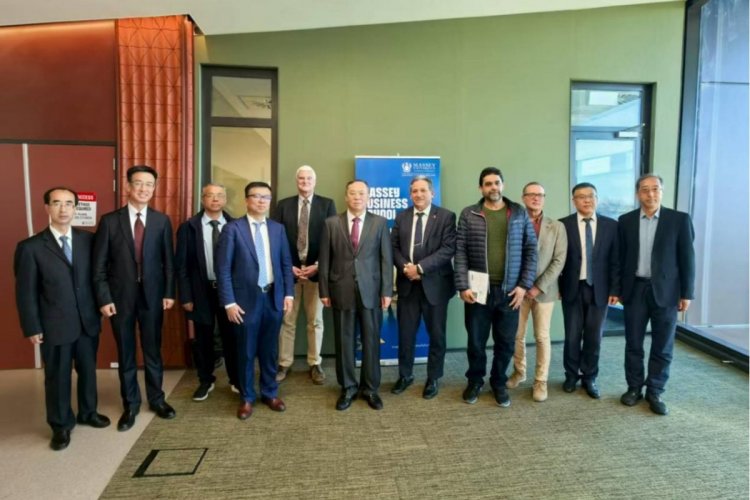
“Good girls go to the kitchen and bad girls go everywhere.” On my trip to everywhere, the first stop was Ottawa, Canada, where I learnt so much. My life in Canada was a mixture of pain and happiness, like most overseas students. However, what I most want to share with you here is the challenging, entirely new learning style, which I experienced in Ottawa. I am not actually very scholarly, but during this year in Canada, I truly felt the happiness brought to me by the active learning style and the variety of teaching methods.
1. Organic chemistry – deep memories carved with each line
The famous professor in the field of bioorganic chemistry, Ben Robert, who taught us intermediate organic chemistry in Ottawa, left a deep impression in my mind by his methods of teaching. Generally, learning name reactions in organic chemistry requires a great amount of repetitive memorization so as to master them well. In China, professors prefer to use slides in classroom teaching. Efficient though it is at providing a lot of detailed knowledge, it doesn’t help students’ memorization. In contrast, Ben Robert adopted the electronic whiteboard in a lecture hall for 400 people. (Lecturers write on the computer screen, while the contents is projected onto a large screen.) As he wrote all the contents for the students line by line, he explained every point to us, while we followed him writing our own notes, and trying to comprehend all his points. The pace was not as fast, but we could remember nearly all the reactions he taught us each class.
2. Biochemistry –Learning from real cases
The teaching group of biochemistry in the University of Ottawa is always trying new teaching methods. For example, our biochemistry professor, Professor Bennett, together with her research group were studying the first case of epilepsy as a result of genetic disorder in Canada. Since this real case had some relationship with our course, Prof. Bennett described for us all the patient’s symptoms from its onset. She also invited the patient’s father to talk with us face-to-face. After this, a small group of us would meet to try to deduce the cause of his disease through discussion and by consulting literature. Through these kinds of teaching methods, we practiced the main steps to solve scientific issues, and also realized the value of being good researchers.
3. Applied chemistry -New educational methods behind enjoyable learning
Prof. Kathy, who taught us applied chemistry and spectral analysis, was my favorite professor at the University of Ottawa, and, in fact, one of the most popular professors there. This was not due to her outstanding research achievements, but because we enjoyed ourselves in her class so much. Her research interest was in chemistry education, in other words, she worked on “how to teach chemistry well”. She used textbooks written by herself in class, which were free from the constraint of traditional textbooks and featured her inspirational teaching. After class, we were able to use non-technical words to explain many chemical phenomena in daily life to students of other majors. I discovered that chemistry is not just an academic, theoretical science. It is all around us and can be explained simply.
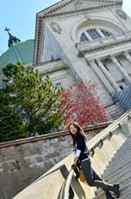
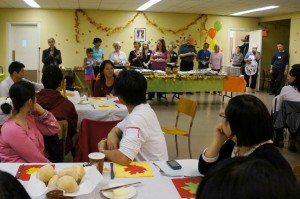
Notre-Dame Basilica of Montreal Thanksgiving Dinner by the OU Students Union
4. Asking questions to learn more
Sometimes in the University of Ottawa, the professors would pause the planned course just because of a question raised by a certain student and then lead the whole class to a lively discussion about it. They believed that students could understand the knowledge better from a good question, and so they would pay attention to every student’s questions. Furthermore, professors encouraged students to interrupt to correct small mistakes in their lectures so as to avoid bigger academic errors. When I first arrived, it seemed rude to me to interrupt the professors like this, but after several months there I really enjoyed this teaching style and saw the value of it.
5. Replying to e-mails promptly
The Internet is widely used in North American education. Professors publish their teaching program and contents on the online learning platform, and they mostly use e-mail to contact students. To my surprise, every time I wrote to my professors, they would always respond to my emails as soon as they could in order not to delay my questions, regardless of whether they could offer help or not. Before the examinations when we had no time to meet them face-to-face, we could still write all our questions to them, and they would answer them one by one in detail.
6. The overall grade is not a “one-time deal”
In China, there is a common idea that as long as you can get a good grade in the final examination, then the homework or the mid-term exam is of little importance. Yet in North America, the overall grade of each course consists of several crucial parts: homework, mid-term exam 1, mid-term exam 2 and experiments. This kind of continuous grading system effectively prevents students from just cramming for the final examination. If you want a high overall grade, you have to work hard on every part, thus you can’t slack off from the beginning to the end of the semester.
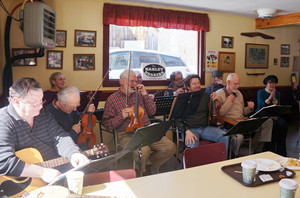
A Live Jazz Band at a local breakfast cafe
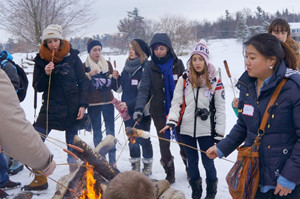
A bonfire in the snow at a village near Ottawa



